Superfund Research Program
By Mali Velasco
Since 2011, the K.C. Donnelly Externship Award, provided by the NIEHS Superfund Research Program (SRP), has enabled graduate students and postdoctoral fellows to learn from experts across institutional lines. This opportunity, given to several people each year, equips them with the skills and connections critical to addressing complex environmental health challenges.
The award is named for the late Texas A&M University (TAMU) researcher Kirby (K.C.) Donnelly, Ph.D., who championed mentorship and partnership. In Donnelly's honor, the awards empower SRP-funded trainees at a formative career stage to conduct research at other SRP-funded institutions, government laboratories, and state, local, or tribal agencies.
Over a decade later, SRP reflects on this award's legacy. Since the externship's inception, 86 trainees have received a K.C. Donnelly award. Many of them have since leveraged their SRP experiences to launch successful careers at other academic institutions, engineering firms, and government agencies.
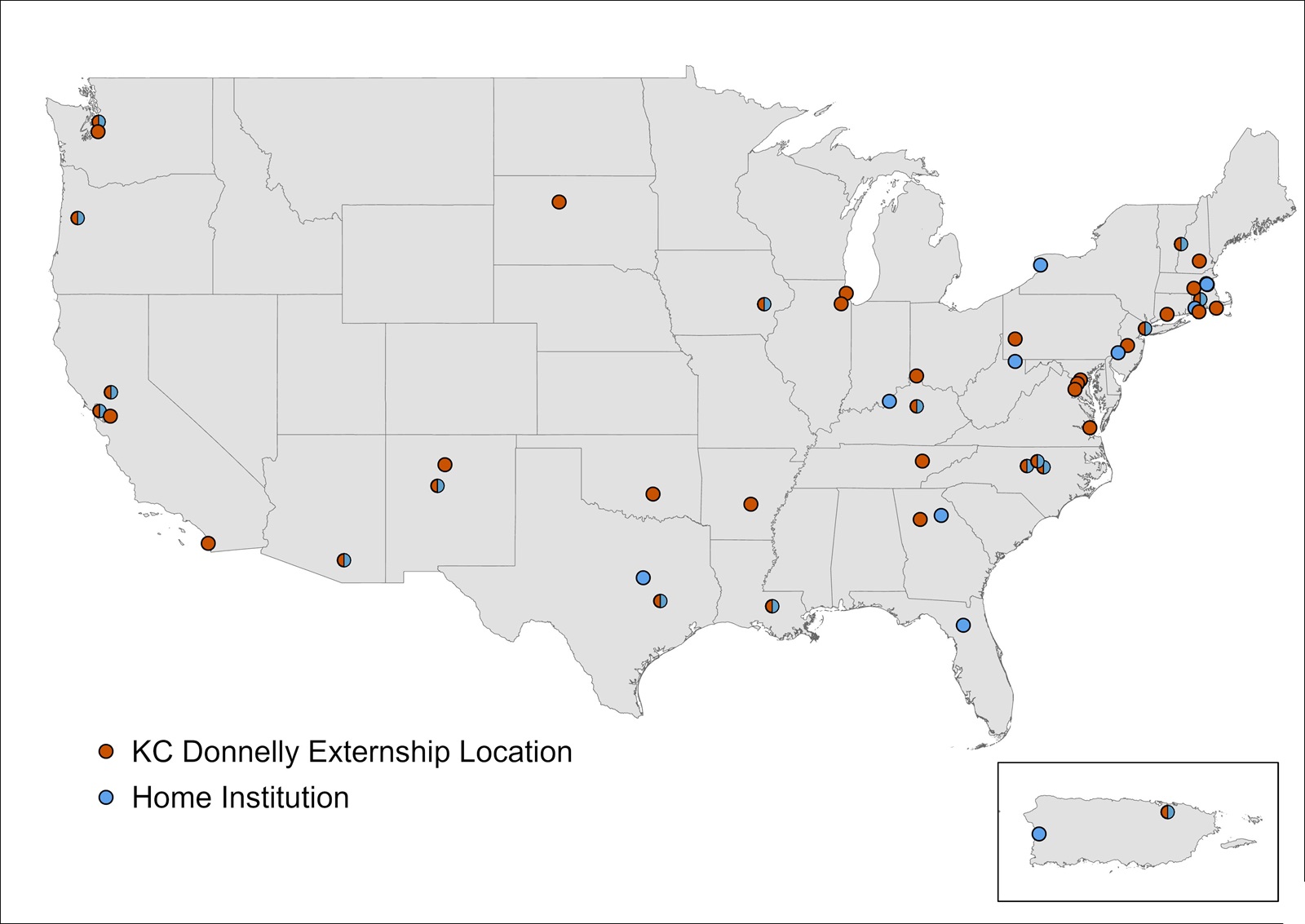
This map shows the location of the home institutions of K.C. Donnelly award winners and their externships' location from 2011 to 2023.
K.C. Donnelly: A Legacy of Opportunity
Donnelly joined the TAMU SRP Center in 1995, where he used cell, animal, and human studies to investigate the toxic interactions of complex chemical mixtures.
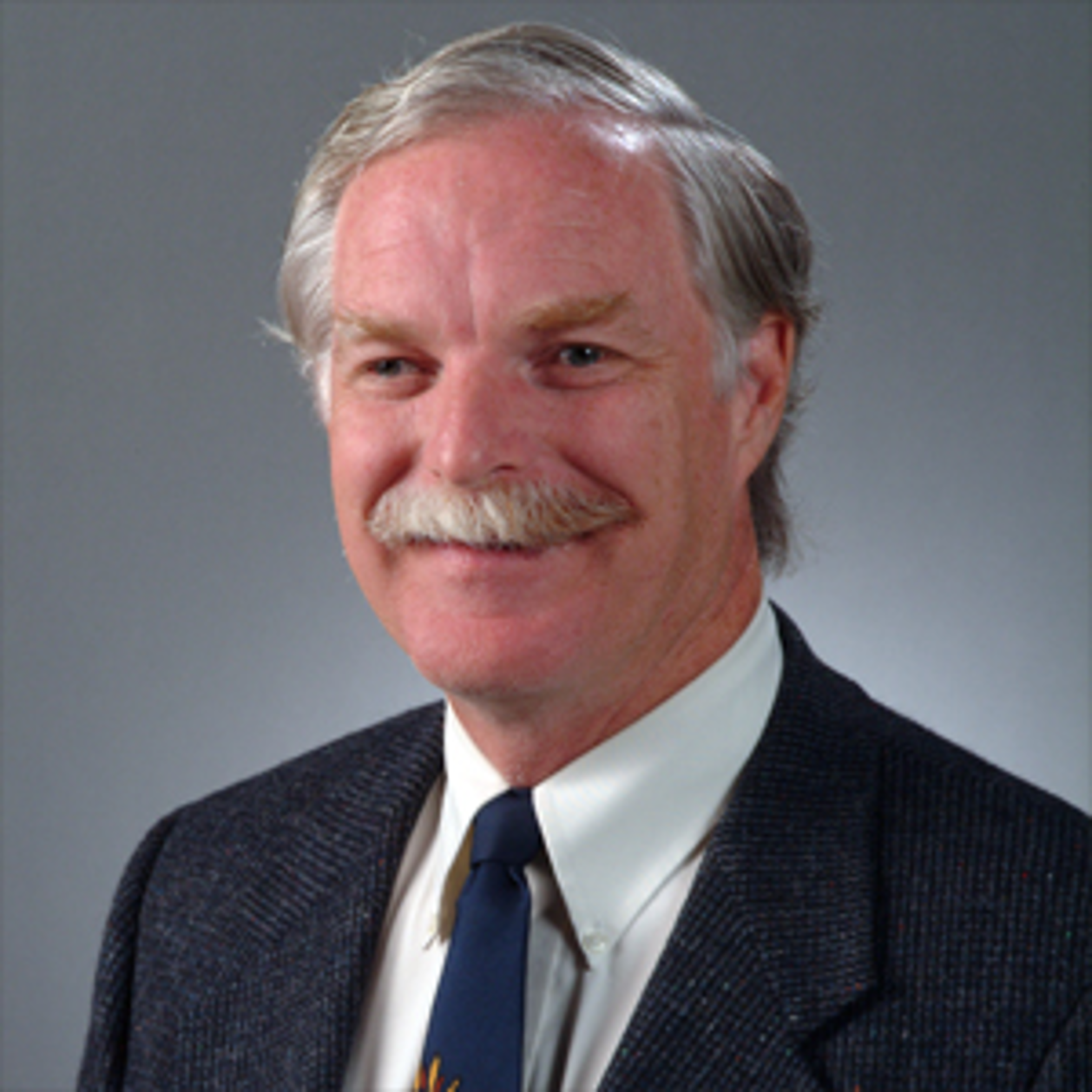
Donnelly served as a professor and head of the Environmental and Occupational Health Department in the School of Rural Public Health at TAMU. (Photo courtesy of TAMU)
A pioneer in environmental health and toxicology, Donnelly's many scientific contributions crossed the boundaries of individual scientific disciplines. For example, in 1998, Donnelly and collaborators developed a comprehensive procedure to characterize the toxic potential of complex mixtures of polycyclic aromatic hydrocarbons (PAHs), improving risk assessments in sites contaminated with multiple PAHs. A few years later, Donnelly worked with environmental scientists to understand how microorganisms can be used to degrade chemical mixtures in soil.
Donnelly was an avid promoter of scientific collaboration. A notable example is the National Bioassay Network, which he initiated and championed. The collaborative, interdisciplinary project brought together researchers from six SRP centers and U.S. Environmental Protection Agency (EPA) scientists to develop a model to improve EPA's ability to use SRP-developed bioassays in ecological risk assessment.
A dedicated mentor and teacher, Donnelly involved his students in his professional collaborations, including his work with EPA and his efforts to improve health in rural communities along the Texas-Mexico border.
"K.C. was a wonderful colleague and mentor to students," said TAMU SRP Center Director Ivan Rusyn, Ph.D., after being recognized as K.C. Donnelly Professor by TAMU in 2019. "He was and remains a role model and inspiration to many toxicologists who work to protect public health."
K.C. Donnelly Externship: Forging Scientific Careers
"Training the next generation of environmental health scientists has been a major aim of SRP since its inception," said former SRP Director William Suk, Ph.D., during closing remarks at the 2022 SRP Annual Meeting.
Through the K.C. Donnelly Externship award, SRP trainees are provided funds for supplies, travel, housing, training at collaborating institutions, and to attend SRP's annual meeting for grant recipients and trainees. This story highlights a few past winners. To learn more about these and other award winners, please visit the K.C. Donnelly Externship Award page.
Alvine Mehinto, Ph.D. - Protecting Water Quality
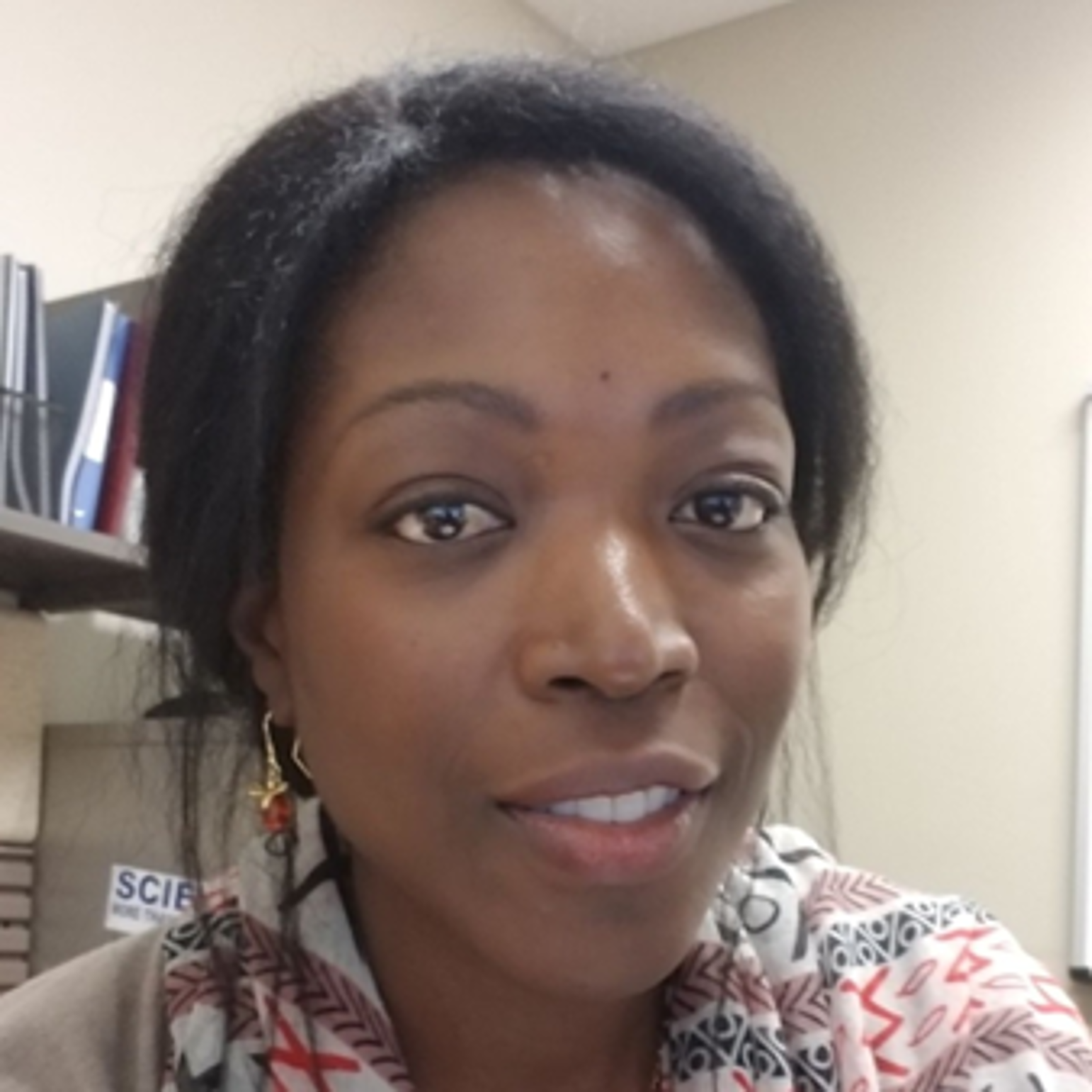
"Finding my mentor and advisor at the University of Florida, Dr. Nancy Denslow, was a major steppingstone," Mehinto said. "Thanks to Nancy, I met and collaborated with leaders in the field of toxicity pathways and omics." (Photo courtesy of Alvine Mehinto)
"My externship allowed me to further understand toxicity pathways and improve my bioinformatics skills," said 2011 K.C. Donnelly Award winner Alvine Mehinto, Ph.D. "Interestingly, it was the opportunity to attend the SRP Annual Meeting following my externship that helped me formulate what I wanted to do: applied research with a focus on technology transfer."
Mehinto, a former SRP-funded postdoctoral research associate at the University of Florida who went to the University of California, Berkeley for her externship, is now the head of the Toxicology Department at the Southern California Coastal Water Research Project (SCCWRP). There, she oversees a variety of projects related to the application of cell bioassays and ecotoxicological risk assessment.
Improving Water Quality: At SCCWRP, Mehinto monitors the health of aquatic organisms and uses cell bioassays and other molecular approaches to improve water quality monitoring. She is also working on microplastics risk assessment to ensure that monitoring data is evaluated in a proper context to fully understand the adverse effects of these pollutants on aquatic health.
Just like the K.C. Donnelly externship, her work at SCCWRP is interdisciplinary and collaborative in nature. She works in partnership with academics and regulators in California to evaluate and standardize new monitoring methods and facilitate technology transfer to water quality managers.
Mehinto's Advice to Trainees: "SRP meetings are unique in that they involve a diverse group of attendees from diverse fields but also at different stages in their careers. For example, I had the opportunity to talk to Dr. Bill Suk about his work in Southeast Asia, which was eye opening, and it made me realize there was a world outside of academia. I highly recommend using this network to learn from and connect with experienced scientists in your field of interest."
Andres Cardenas, Ph.D. - Uncovering the Health Effects of Early-Life Exposures
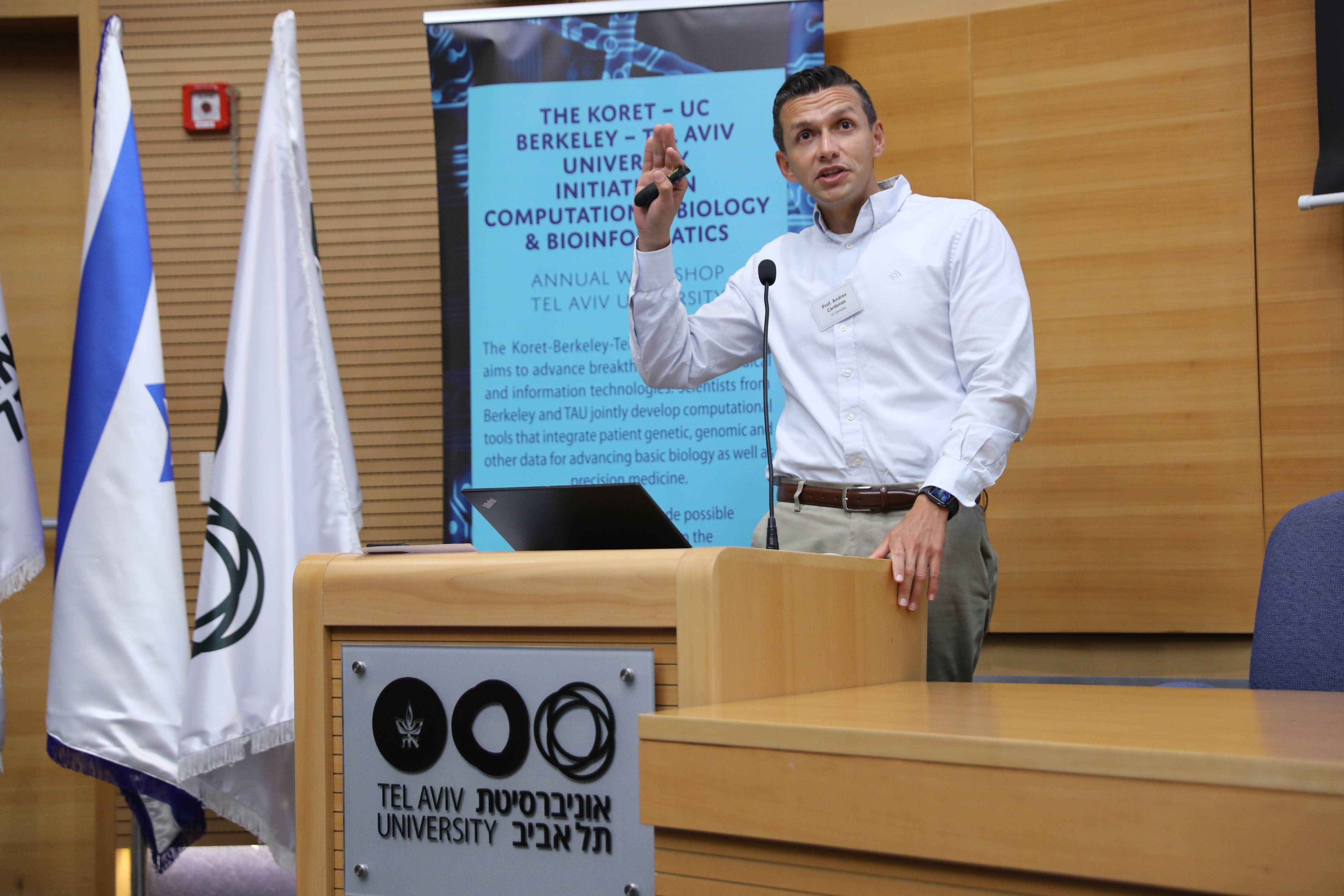
"Becoming a faculty member was a long journey for me. I never intended to go into academia, I didn't even know this was a career path, but I was lucky enough to have a fantastic team of mentors along the way that helped me get here," Cardenas reflected. (Photo courtesy of Andres Cardenas)
"Being a part of SRP was pivotal for my career development. The emphasis on trainees and research translation is immensely beneficial," said Andres Cardenas, Ph.D., who received a K.C. Donnelly Externship award in 2014.
A former doctoral student at the Oregon State University SRP Center, Cardenas is now a professor at Stanford University. He conducted his externship at Dartmouth College, where he learned new computational methods to evaluate how exposure to arsenic in utero can affect infants' health.
"Beyond the technical skills I acquired, the externship was immensely beneficial as it helped me to understand how environmental epidemiology is carried out by different research teams," he said. "I also made many professional connections that I maintain to this day, which improved my research skillset and collaborative research network."
NIEHS-Funded Research: Besides teaching at Stanford, Cardenas also leads a project with the University of California, Berkeley SRP Center to reveal how exposure to PFAS and metals prenatally and in early childhood can lead to lasting health consequences later in life.
"During my time as a Ph.D. student, I became fascinated by the plausibility that our environment in utero could program health and disease susceptibility throughout the course of our lives," he explained. "This provides an immense opportunity in public health to do early and primary disease prevention."
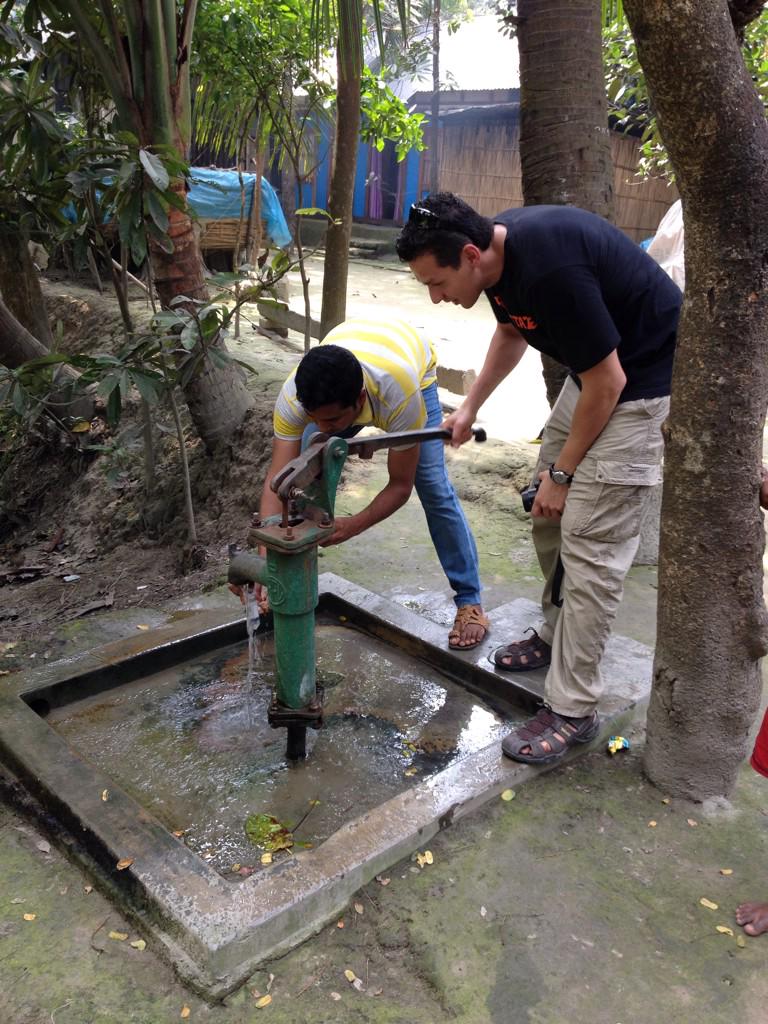
At OSU Cardenas studied arsenic exposure in Bangladesh. Here, Cardenas (right) and research staff are collecting water samples from tube wells in Bangladesh. (Photo courtesy of Andres Cardenas)
Cardenas also investigates how the prenatal environment programs biological aging using epigenetic aging clocks, which are strong biomarkers of mortality and morbidity. While working with the Center for the Health Assessment of Mothers and Children of Salinas (CHAMACOS) Study, he found that maternal conditions and prenatal exposure to phthalates accelerate epigenetic aging clocks during childhood.
Through another NIEHS-funded project, Cardenas is following a population in Chile that was exposed to high levels of arsenic from drinking water in early life and was found to have acceleration of multiple epigenetic aging clocks decades later with relatively high effect sizes.
Cardenas’s Advice to Trainees: "Leverage the multidisciplinary approach of the Superfund program to develop, test, and explore new research approaches and paradigms. Interacting with scientists from other disciplines, communities, regulators, and stakeholders will lead to innovative approaches and new ideas of how to solve the complex environmental health problems we currently face."
Nabil Shaikh, Ph.D. – Interdisciplinary Science and Electrochemistry
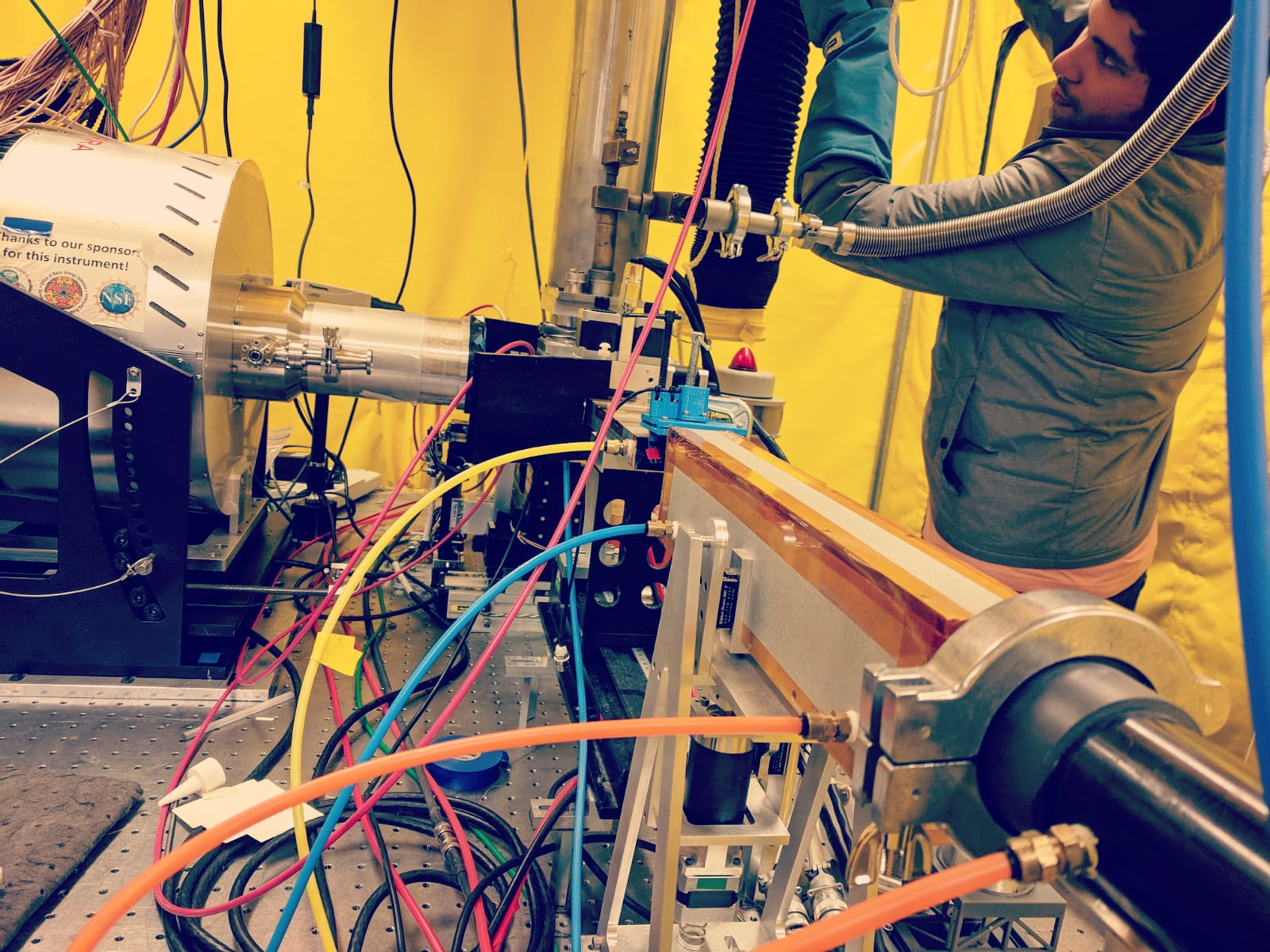
"Through the externship I had the opportunity to work in all aspects of the research project, including fabrication of the fibers, characterization, experimentation, and modeling," Shaikh said. (Photo courtesy of Nabil Shaikh)
"The SRP and K.C. Donnelly externship helped me to be a better scientist in a larger group environment and to be able to move between labs with ease during my career," said Nabil Shaikh, Ph.D. "The structure of an SRP center, which involves multiple researchers and labs, taught me the importance of a cross-functional and interdisciplinary approach to addressing research questions. Furthermore, the K.C. Donnelly externship helped me to become familiar in unfamiliar places."
While he was pursuing a doctoral degree at the University of New Mexico SRP Center, Shaikh traveled to the University of Iowa SRP Center for a 2019 KC Donelly Externship. There, he learned how to make nanofibers through a technique called electrospinning, which uses polymer solutions and strong electric fields to produce nano-sized fibers. The electrospun nanofibers can be used to detect uranium in contaminated water.
Applied Electrochemical Engineering: Shaikh is now a staff scientist at Twelve, a chemical manufacturing company.
"The externship helped me understand how to achieve success in a short period of time, which is important in industry as one does not get the same timescale to work in as compared to academia," Shaikh said. "Having a clear goal and finding synergy with different research groups has helped me become a better collaborator and lead cross functional teams in my career."
Using carbon transformation technology, Shaikh and his team are now converting carbon dioxide into various products and materials that are typically made from fossil fuels. This is made possible through an electrochemical reactor that works like industrial-scale photosynthesis, which uses carbon dioxide, water, and renewable energy to create aviation fuel, car parts, sunglasses, and more.
Shaikh's Advice to Trainees: "Be inquisitive and creative with research ideas and refine them continuously. Do not be afraid to conduct research in an unfamiliar environment. Instead, approach each opportunity with an open mindset as one does not know exactly which career path you could end up in."
Anna Robuck, Ph.D. - Characterizing PFAS in the Delaware River and Estuary
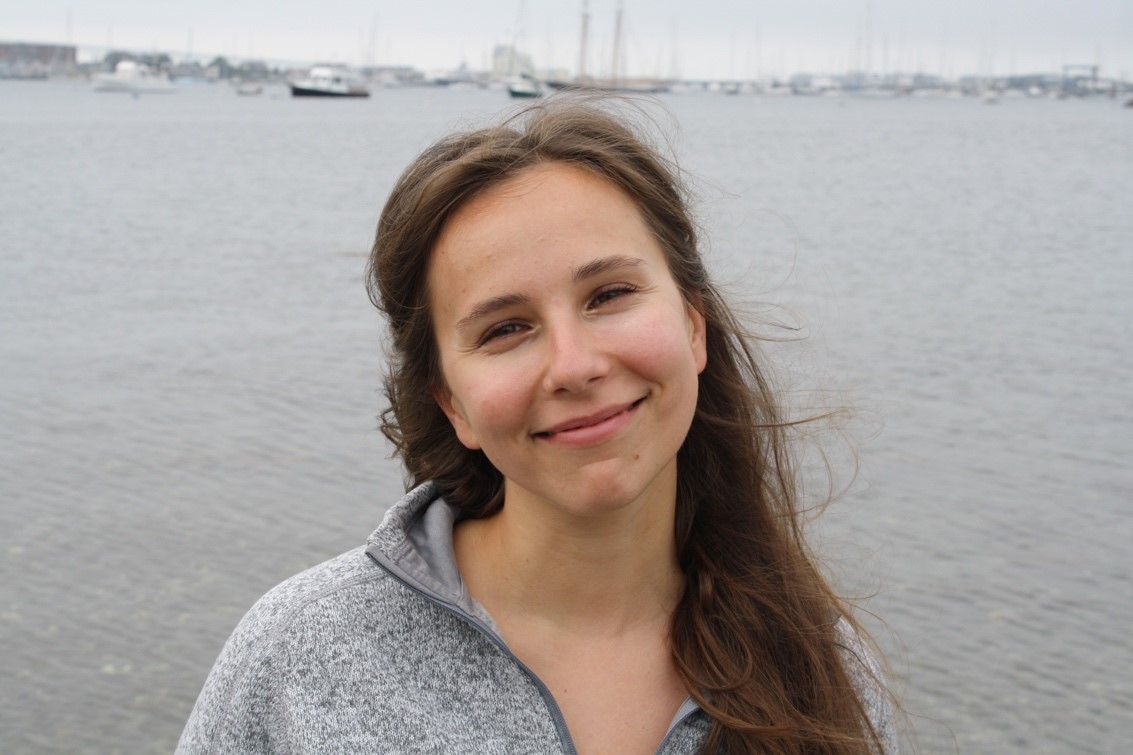
"My externship helped me form relationships with scientists and regulators in state agencies," Robuck said. "Learning to grow and navigate these relationships has proved to be an invaluable skill set as an EPA scientist seeking to best support the science needs of states, tribes, and other public health stakeholders." (Photo courtesy of Anna Robuck)
"My SRP training was transformative - the program provided me with such a variety of training and mentorship that facilitated incredible growth as a scientist and professional," said Anna Robuck, Ph.D.
Robuck, a former University of Rhode Island (URI) SRP Center trainee, conducted her 2020 externship at the EPA's Office of Research and Development, which allowed her to work with federal researchers in Research Triangle Park, North Carolina. She also worked with the National Oceanic and Atmospheric Administration Nancy Foster Scholarship and Oak Ridge Institute for Science and Education Research Fellowship as part of her Ph.D. program at URI, which focused on PFAS in seabirds and marine environments.
"The K.C. Donnelly externship and my Ph.D. experiences were great opportunities to learn about the federal workforce and ongoing research in these spheres. These experiences helped me figure out I wanted to land at EPA for a permanent role," Robuck reflected.
"During my externship, I spent time at EPA working with world-class experts to fine-tune the nontarget analysis skills I use now," Robuck said. "I credit the time spent working on my externship as the period when I evolved from student to a capable, independent nontargeted analysis user."
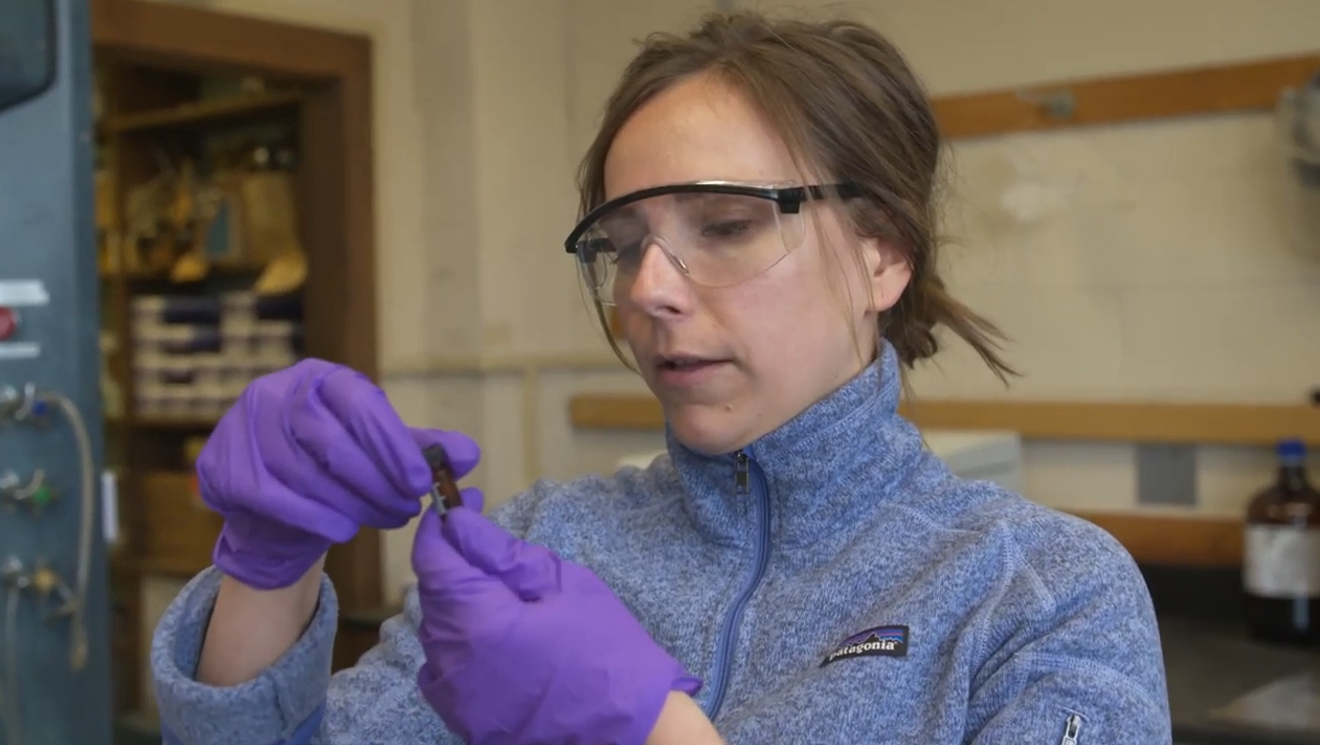
In this URI SRP Center video, Robuck explains her research to understand the distribution of PFAS in the environment by analyzing bird tissues. (Photo courtesy of URI)
Analyzing PFAS Contamination in a vital U.S. river and estuary: According to Robuck, the K.C. Donnelly externship allowed her to pursue field and lab work that expanded upon skills and preliminary data gathered during her doctorate program. Robuck discovered a range of new or understudied PFAS in water, fish, and sediment from the Delaware River and Delaware Estuary. This work provided the first evaluation of the high bioaccumulation capacity of an understudied group of PFAS called chloroperfluoropolyether carboxylates.
"There's rarely a dull moment in PFAS world using high resolution instrumentation, as we often find new or understudied compounds in many of our sample sets," Robuck said.
Now at EPA, Robuck uses targeted and nontargeted tools to analyze PFAS in environmental samples at an EPA research facility in Narragansett, a coastal town in Rhode Island. Her goal is to determine the occurrence and ramifications of these compounds in the environment.
Robuck's Advice to Trainees: "Engage with the many facets of training offered through the SRP! The program provides access to such a variety of trajectories and disciplines related to environmental health and exposure science, and this variety can help you best steer your career towards topics and applications you're passionate about and equipped to pursue."
For more information about the award and application process, see the K.C. Donnelly Externship Guidelines page.


